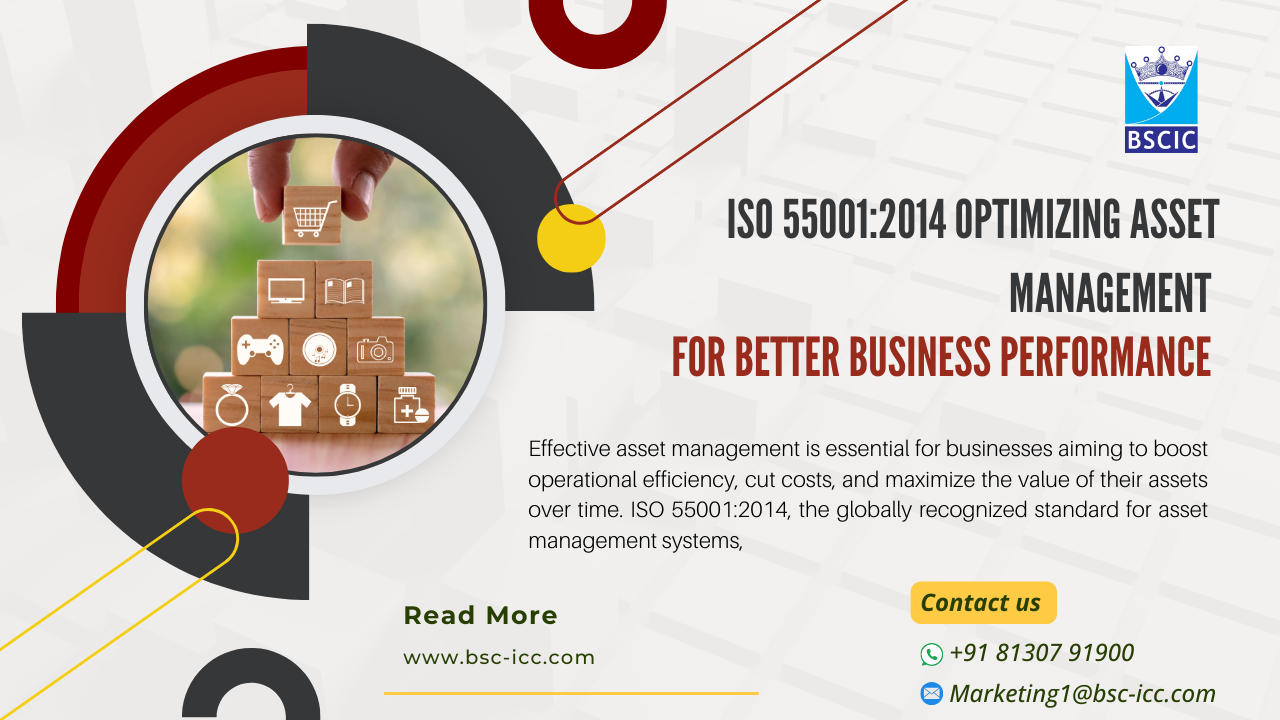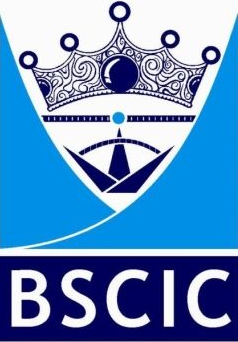
ISO 55001:2014 Optimizing Asset Management for Better Business Performance
Introduction
Effective asset management is essential for businesses aiming to boost operational efficiency, cut costs, and maximize the value of their assets over time. ISO 55001:2014, the globally recognized standard for asset management systems, offers organizations a structured method for managing assets in an efficient and sustainable manner. By implementing ISO 55001:2014, companies can optimize their resources, reduce risks, and achieve lasting profitability by ensuring that their asset management processes are in line with their overall goals.
Understanding ISO 55001:2014
ISO 55001:2014:2014 serves as a detailed framework aimed at enhancing asset management strategies across a range of industries, such as manufacturing, energy, transportation, and infrastructure. The standard outlines guidelines for establishing, implementing, maintaining, and improving an Asset Management System (AMS) that guarantees assets provide maximum value throughout their lifecycle. By embracing ISO 55001:2014:2014, organizations can create a systematic approach to managing physical, financial, and human assets, leading to better decision-making and enhanced performance.
The Importance of ISO 55001:2014 for Businesses
Poor asset management can result in financial setbacks, operational interruptions, and compliance challenges. ISO 55001:2014:2014 tackles these issues by encouraging a proactive and data-informed approach to asset management. Companies that adopt ISO 55001:2014:2014 experience benefits such as reduced downtime, better resource utilization, and improved risk management. The standard ensures that asset management strategies are aligned with corporate goals, allowing assets to contribute to long-term value creation instead of becoming burdens.
Additionally, ISO 55001:2014:2014 improves compliance with industry regulations and sustainability efforts. Many regulatory agencies require organizations to show effective asset management to keep their operational licenses and certifications. By following ISO 55001:2014:2014, businesses can meet regulatory standards, lessen their environmental footprint, and support corporate social responsibility (CSR) objectives.
Key Elements of ISO 55001:2014:2014
ISO 55001:2014:2014 is founded on several key principles that promote effective asset management. The first step is to create an asset management policy that defines objectives, responsibilities, and performance metrics. Organizations then need to engage in risk-based planning to pinpoint potential threats and opportunities concerning asset performance. The implementation phase involves developing and maintaining processes for asset acquisition, operation, maintenance, and disposal to maximize value throughout the asset's lifecycle.
Performance evaluation is another vital component of ISO 55001:2014. Organizations must consistently monitor, measure, and analyze asset performance to find areas for enhancement. Regular audits and reviews help ensure that asset management practices stay effective and aligned with business objectives. Finally, ISO 55001:2014 emphasizes continuous improvement, encouraging organizations to refine their asset management strategies based on data-driven insights and changing business requirements.
Benefits of Implementing ISO 55001:2014
Organizations that embrace ISO 55001:2014 see notable enhancements in asset efficiency and cost savings. By establishing a structured asset management system, businesses can optimize maintenance schedules, prolong asset lifespan, and minimize unplanned downtime. This results in reduced operational costs and a higher return on investment (ROI) for capital assets.
ISO 55001:2014 significantly improves risk management by equipping organizations with the necessary tools to identify, assess, and mitigate risks associated with their assets. This proactive strategy helps avert failures, accidents, and compliance issues that could lead to financial losses or harm to reputation. Furthermore, businesses gain enhanced decision-making capabilities, as ISO 55001:2014 encourages data-driven asset management strategies that align with their long-term goals.
Another important benefit of ISO 55001:2014 is its influence on sustainability and environmental responsibility. The standard motivates organizations to adopt energy-efficient practices, minimize waste, and lessen their environmental footprint by optimizing how they use their assets. This not only bolsters corporate sustainability initiatives but also addresses the increasing demands from customers, investors, and regulators for responsible asset management.
Conclusion
ISO 55001:2014 serves as a valuable resource for businesses aiming to improve asset management efficiency, cut costs, and boost overall performance. By adopting this globally recognized standard, organizations can create a systematic approach to asset management that aligns with their strategic objectives and sustainability ambitions. Whether in manufacturing, infrastructure, or energy sectors, implementing ISO 55001:2014 results in better resource utilization, enhanced asset reliability, and long-term business success. Embracing ISO 55001:2014 is more than just a compliance obligation; it represents a strategic investment in operational excellence and sustainable growth.
